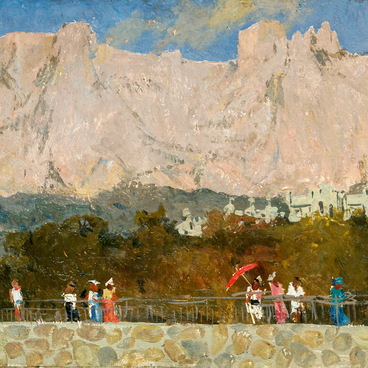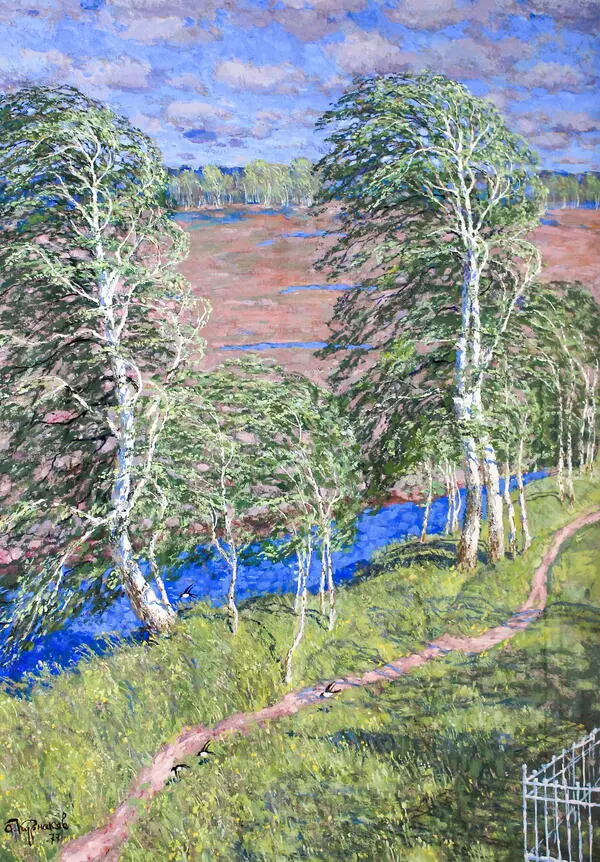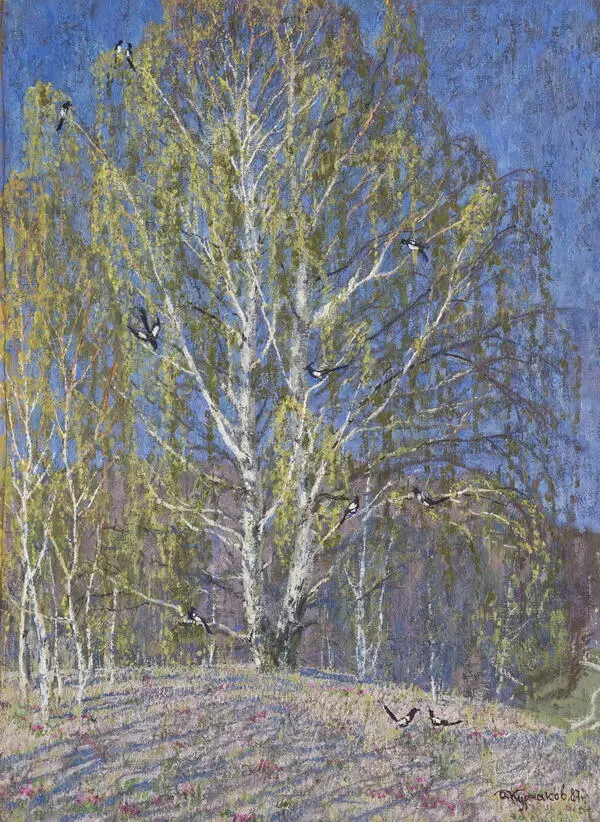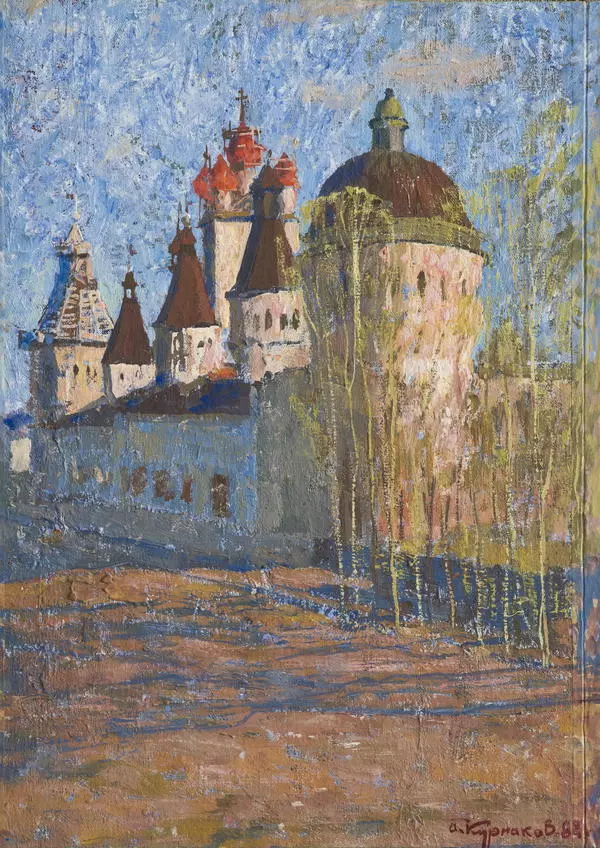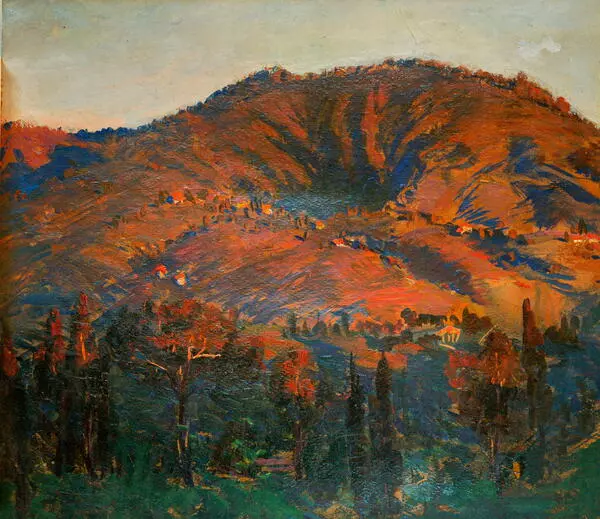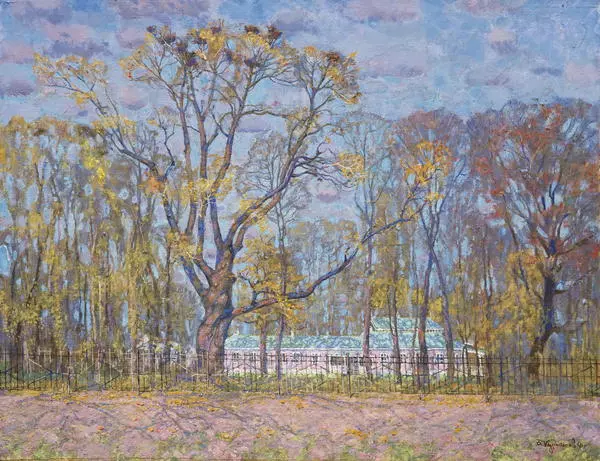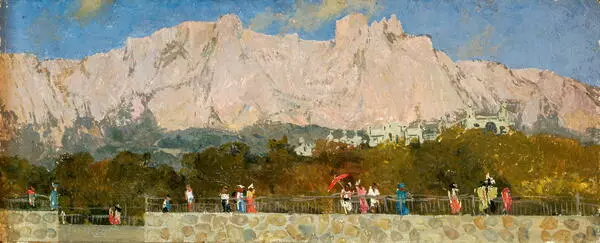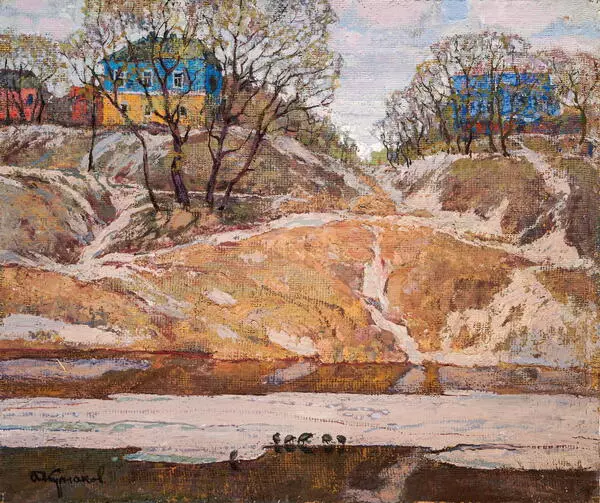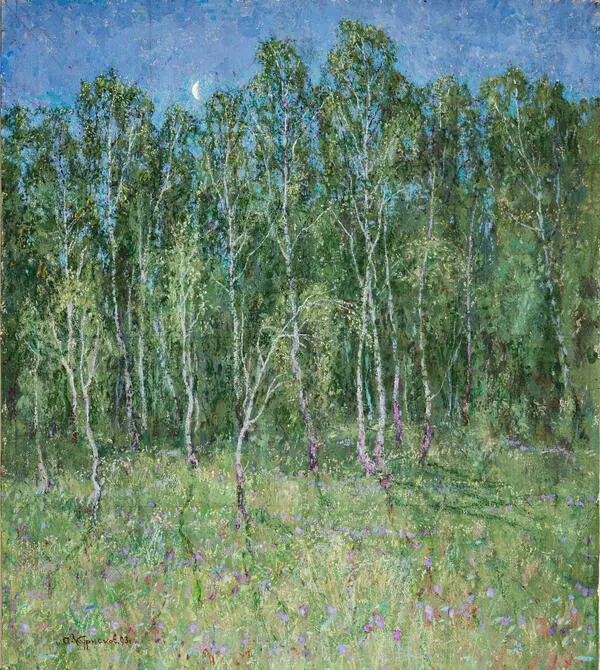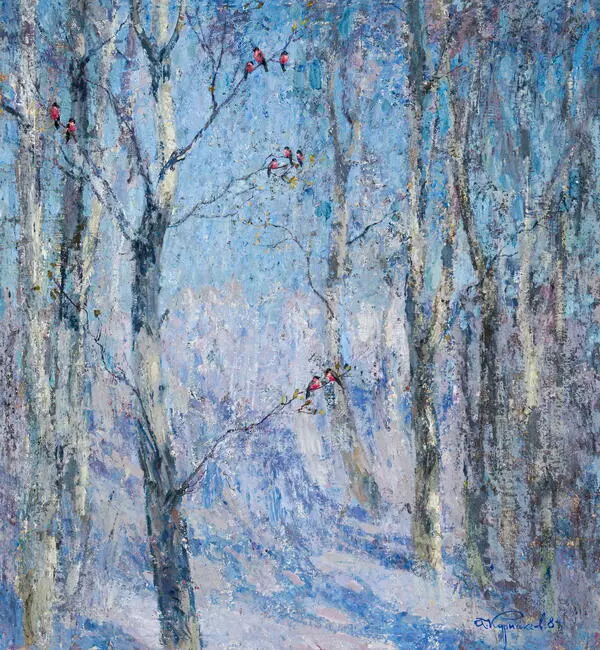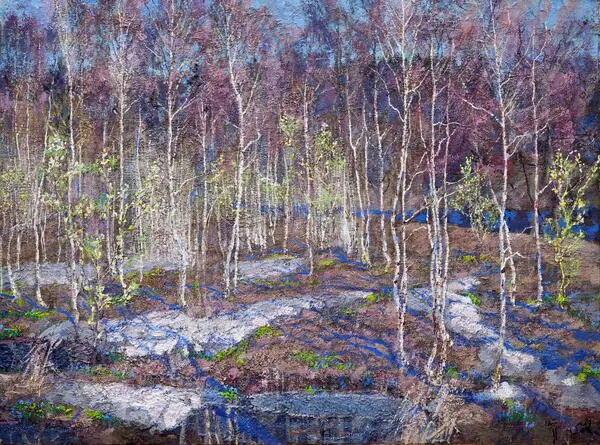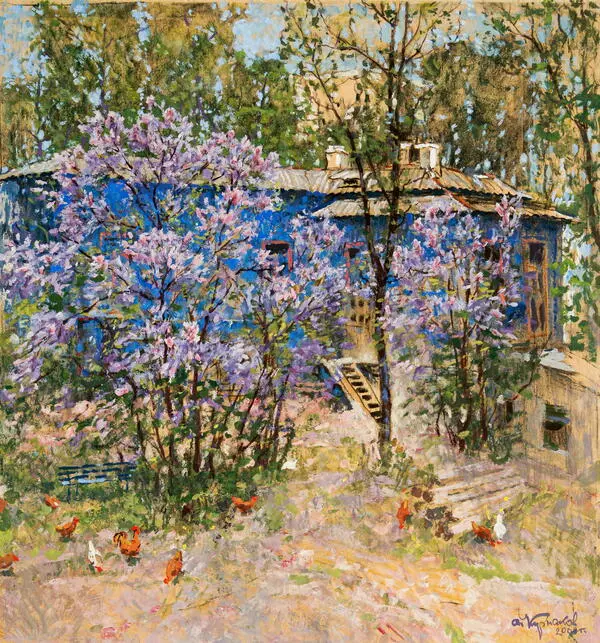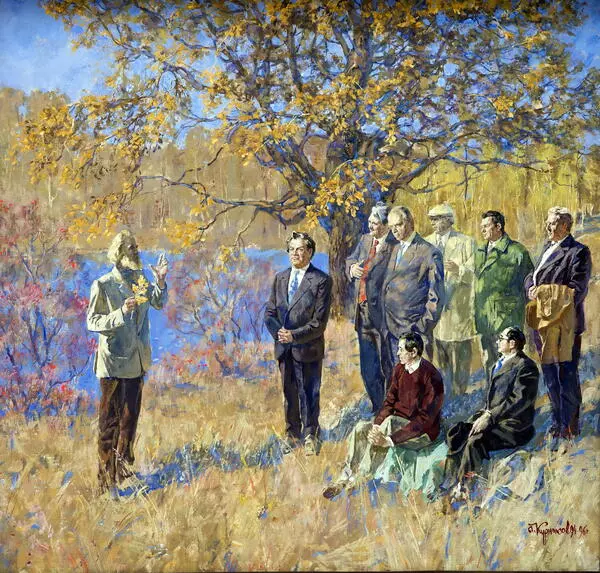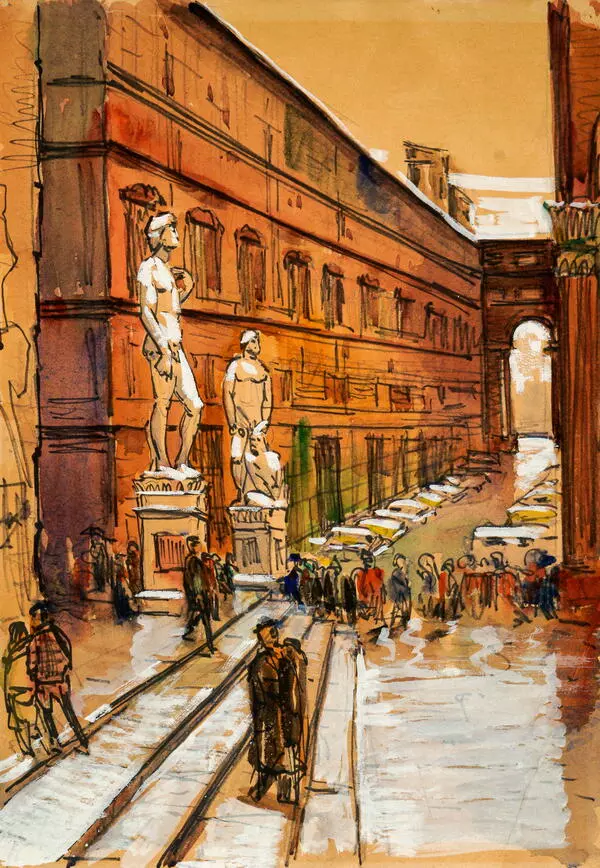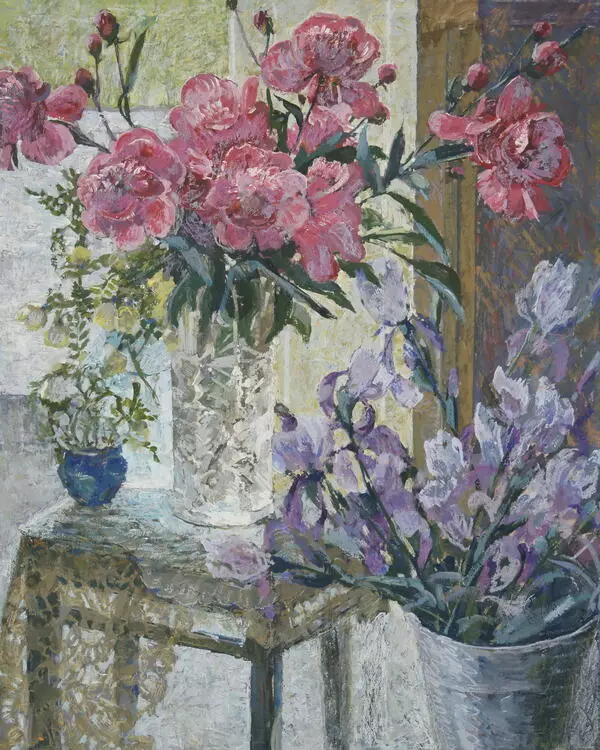Today, there are over 200 streets, bridges, squares, and parks in the homeland of Andrey Kurnakov. This area on the outskirts of Oryol once looked very similar to the view in the artist’s painting.
The painting titled “Childhood Yard” depicts the house where Kurnakov grew up. In the summer of 1943, fierce hostilities took place in the area, devastating it almost completely. The artist was lucky — his house was left untouched. After his service in the war, Kurnakov returned there in the autumn of 1945.
The frontline period of the painter’s life turned out to be very difficult. His complicated path lay through Iran, Crimea, Romania (where he was held captive at a camp near the town of Galați), Yugoslavia, Hungary, Bulgaria, Poland, and Austria. Private Kurnakov, a topographer of the 230th Reserve Rifle Regiment of the 53rd Army of the 2nd Ukrainian Front, celebrated Victory Day in Czechoslovakia near Austerlitz. And there still was Mongolia ahead of him. For the artist, the war ended only on September 2, 1945, after the act of surrender of Japan was signed.
Kurnakov scholars believe that this landscape was the first painting the artist created right after returning from the war to his native Oryol. When he painted this picture, he might have felt nostalgic about the past, reminiscing about those happy carefree days of his childhood. Those memories contrasted starkly with the war that had just ended. That is why the coloring of the landscape “Childhood Yard” is muted, gloomy, and autumnal, instead of being bright and joyful, which is usually expected of the childhood theme. The painting conveys sadness, grief, and all the other miserable things people had to go through during this tragic period of history.
The focal point of the composition is an old log house lined with thin gray planks. The foreground depicts withered and wilted grass, thin twigs with few yellowed leaves, which are gradually carried by the wind throughout the yard. The barren wet path leading to the house through the yard is painted in thick textured strokes, emphasizing its muddy, uneven, and bumpy surface. The distance reveals a gray wooden fence separating the yard from the street. Behind the fence are blurry silhouettes of the neighboring houses. Ocher specks of fallen leaves enliven the landscape just a little. The background is the sky with bluish-gray clouds. This is the only bright spot on the canvas, which is probably intended to symbolize the hope for a new, peaceful, and happy life that is sure to come.
The painting titled “Childhood Yard” depicts the house where Kurnakov grew up. In the summer of 1943, fierce hostilities took place in the area, devastating it almost completely. The artist was lucky — his house was left untouched. After his service in the war, Kurnakov returned there in the autumn of 1945.
The frontline period of the painter’s life turned out to be very difficult. His complicated path lay through Iran, Crimea, Romania (where he was held captive at a camp near the town of Galați), Yugoslavia, Hungary, Bulgaria, Poland, and Austria. Private Kurnakov, a topographer of the 230th Reserve Rifle Regiment of the 53rd Army of the 2nd Ukrainian Front, celebrated Victory Day in Czechoslovakia near Austerlitz. And there still was Mongolia ahead of him. For the artist, the war ended only on September 2, 1945, after the act of surrender of Japan was signed.
Kurnakov scholars believe that this landscape was the first painting the artist created right after returning from the war to his native Oryol. When he painted this picture, he might have felt nostalgic about the past, reminiscing about those happy carefree days of his childhood. Those memories contrasted starkly with the war that had just ended. That is why the coloring of the landscape “Childhood Yard” is muted, gloomy, and autumnal, instead of being bright and joyful, which is usually expected of the childhood theme. The painting conveys sadness, grief, and all the other miserable things people had to go through during this tragic period of history.
The focal point of the composition is an old log house lined with thin gray planks. The foreground depicts withered and wilted grass, thin twigs with few yellowed leaves, which are gradually carried by the wind throughout the yard. The barren wet path leading to the house through the yard is painted in thick textured strokes, emphasizing its muddy, uneven, and bumpy surface. The distance reveals a gray wooden fence separating the yard from the street. Behind the fence are blurry silhouettes of the neighboring houses. Ocher specks of fallen leaves enliven the landscape just a little. The background is the sky with bluish-gray clouds. This is the only bright spot on the canvas, which is probably intended to symbolize the hope for a new, peaceful, and happy life that is sure to come.


